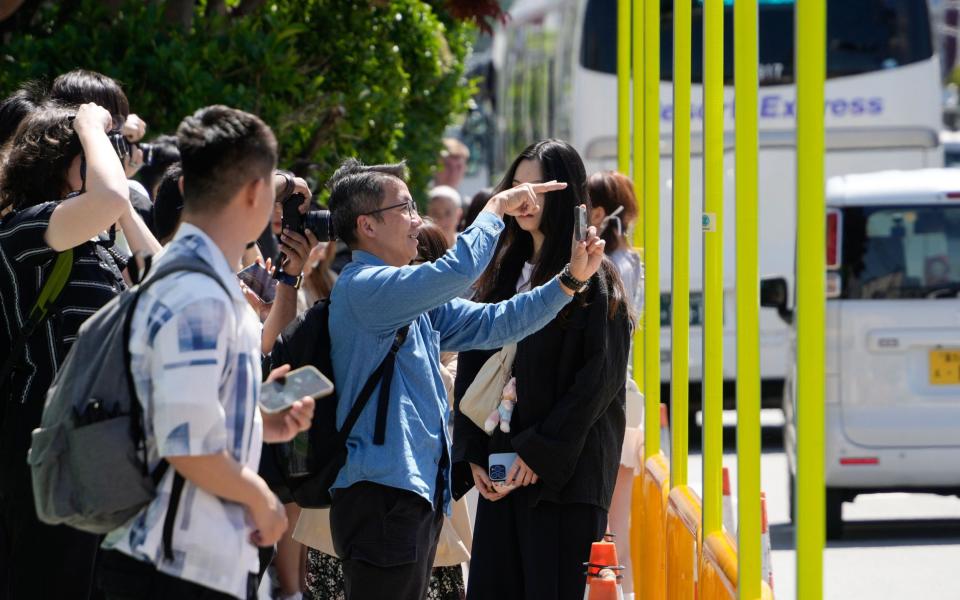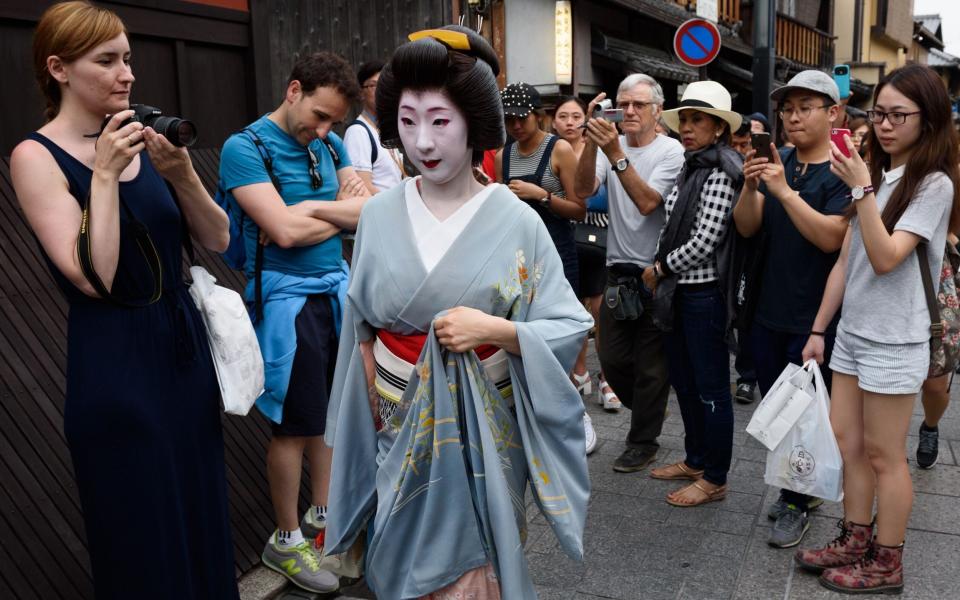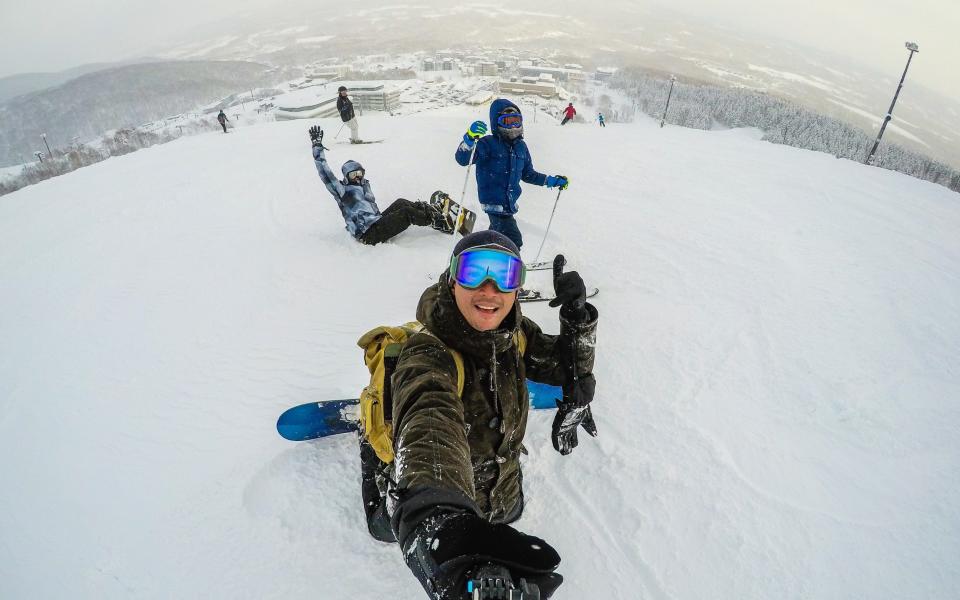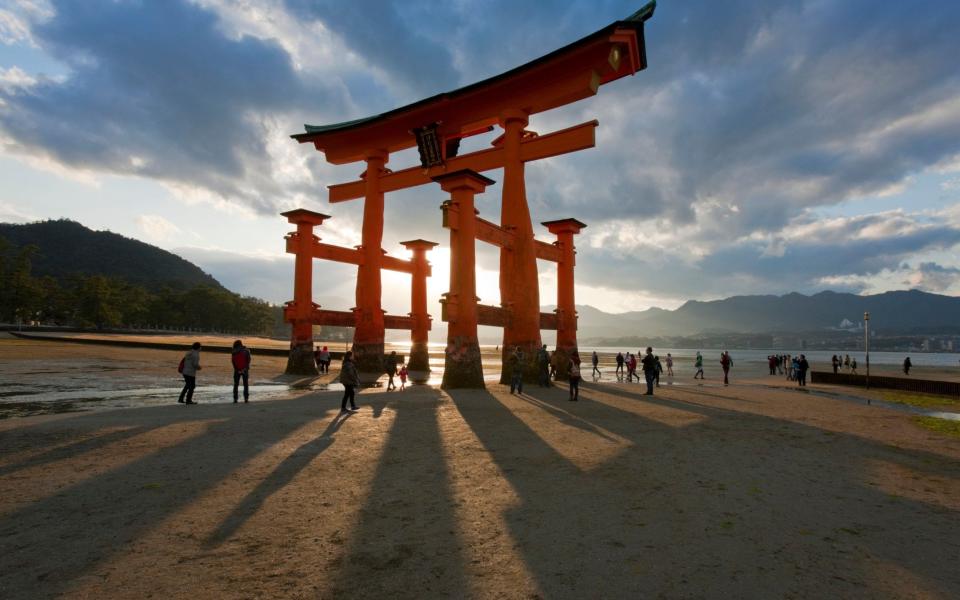It is perhaps one of Japan’s most iconic scenes: the triangular form of Mount Fuji rising into the blue sky, its snow-capped peak delicately reflected in the still waters of a nearby lake.
This image is captured with restrained simplicity in a 19th-century woodblock print by Katsushika Hokusai, the artist responsible for the iconic “36 Views of Mount Fuji” series.
Number 35 depicts Lake Kawaguchi, a setting that is as natural as it is timeless. Nearly two centuries later, it remains a magnet for Mount Fuji lovers and is now an increasing problem for local communities flooded with tourists.
Last week a lake town – Fujikawaguchiko – reached boiling point, making headlines around the world when it began erecting a massive black barrier to hide its popular viewing spot. The decision follows numerous complaints from locals, from tourists littering and illegal parking to visitors climbing onto nearby rooftops to find the perfect shot.

Perhaps the display feels like an extreme measure – especially in a country famous for its good-natured moderation and stoicism – but this is not an isolated incident. Post-pandemic open borders, combined with the tantalizing weakness of the yen, are reaching record levels for inbound tourism, with the number of monthly visitors from abroad rising to 3 million for the first time in March. Japan is flooded with tourists like never before, and the local residents who bear the burden are running out of patience.
As a result, a number of initiatives are proliferating in Japan to combat the growing challenges of overtourism and its deep-seated cultural sensitivities.
For example, local government officials in the Mount Fuji region recently announced plans to introduce a new mandatory fee of 2,000 yen to ascend to the summit. Tourists will have to pay the fee from July 1, the start of this year’s climbing season, when daily numbers are also limited to 4,000.
Another hotbed of overtourism is the ancient capital of Kyoto, which in recent months has introduced a series of increasingly desperate measures to limit overtourism on its historic streets.
Among its most notable measures is the recent closure of parts of the historic geisha district of Gion due to increasing cases of “badly behaved” tourists tugging on geishas’ kimonos and crowding them to take photos.


Another important problem is that Kyoto’s local buses are overcrowded; City officials also announced plans in March to offer dedicated buses to tourist attractions to relieve pressure on overused local routes.
Sara Aiko, director and founder of Curated Kyoto, a luxury travel curation company headquartered in Kyoto, explains: “When tourism begins to disrupt residents’ daily routines and saturate quiet places like temples and shrines, the situation is not comfortable. As global citizens, we’re all about sharing our beautiful cities, but when your peaceful bus ride to the supermarket turns into a struggle or your favorite bar is overrun by crowds, locals get frustrated, leading to tension.
He adds: “Of course it’s not fun for the tourists either. I want visitors to experience Kyoto at its best without feeling like they’re part of a mass movement. “Kyoto still has magical, quiet corners waiting to be discovered, but the problem lies in the infrastructure and lack of regulation on visitor numbers.”
Niseko, on Japan’s northernmost island of Hokkaido (an increasingly sought-after winter sports destination thanks to its famous white powder), is now booming during the winter months and struggling to keep up.


As a result, the resort will begin charging visitors up to 2,000 yen per night for accommodation starting next November – just in time for the next winter ski and snowboard season – in the hope that numbers will dwindle.
Further south, the city of Hatsukaichi in Hiroshima prefecture recently introduced a 100 yen entrance fee to help preserve Itsukushima, the iconic temple on the Unesco-listed island of Miyajima, known for its red torii gate surrounded by the sea at high tide.


‘Avoid the algorithm’
The Japanese government is also exploring ways to minimize the impact of overtourism on the country’s vulnerable segments by launching a project aimed at diverting tourists away from the so-called Golden Triangle of Tokyo, Kyoto and Osaka.
Instead, Japan is promoting 11 so-called “model” destinations to help tourists explore lesser-known (and emptier) spots around the country; Exploring samurai culture in Hokuriku; Nature activities in Nasu, Tochigi; Nagano and Gifu Alps; Kagoshima volcanoes and national parks of eastern Hokkaido.
For tourists who want to visit Japan but also avoid crowds and minimize pressure on local communities, Charles Spreckley, founder of Japan-based travel design company People Make Places, has some advice.
“Evade the algorithm and create your own adventure,” he suggests. “Ignore Google reviews and other tourism portals. “The nice thing about Japan is that because it’s so safe, you can literally pick a destination and start walking, and you’ll make a lot of discoveries along the way.”
So will Japan’s increasingly extreme measures have the desired effect? The country appears to be growing in popularity among foreign visitors, and while locals are understandably concerned about the preservation of their beautiful, ancient and fragile culture, there may still be problems ahead.